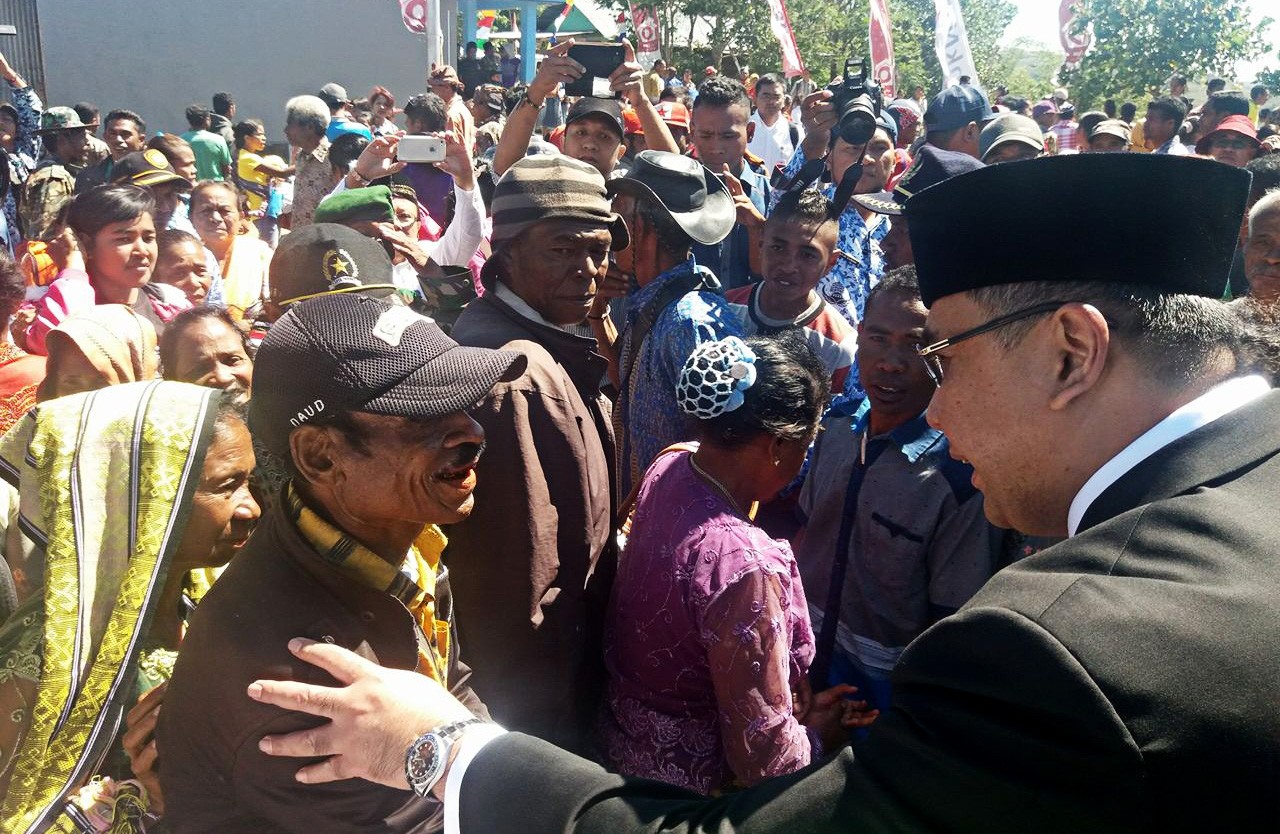Independence Day celebrated on Indonesia-Timor Leste border
The celebration of the 71st Independence Day in Belu, East Nusa Tenggara regency, which shares a border with Timor Leste, ran smoothly on Wednesday, with Villages, Disadvantaged Regions and Transmigration Minister Eko Putro Sandjojo attending a flag-raising ceremony.
Change Size
 Celebrating independence -- Villages, Disadvantaged Regions and Transmigration Minister Eko Putro Sandjojo greets local people after a flag-raising ceremony to celebrate the 71st Independence Day in Laktutus village, Belu, East Nusa Tenggara, on Wednesday. (thejakartapost.com/Djemi Amnifu)
Celebrating independence -- Villages, Disadvantaged Regions and Transmigration Minister Eko Putro Sandjojo greets local people after a flag-raising ceremony to celebrate the 71st Independence Day in Laktutus village, Belu, East Nusa Tenggara, on Wednesday. (thejakartapost.com/Djemi Amnifu)
T
he celebration of the 71st Independence Day in Belu, East Nusa Tenggara regency, which shares a border with Timor Leste, ran smoothly on Wednesday, with Villages, Disadvantaged Regions and Transmigration Minister Eko Putro Sandjojo attending a flag-raising ceremony there.
“I chose Belu because it borders with Timor Leste and I wanted to get direct input from people in this region,” he said after an Independence Day celebration in Nanaet Dubesi district.
Attending the Independence Day ceremony in Belu was one of the minister’s activities during his two-day visit to the area, which ended on Wednesday.
On Tuesday, Eko monitored the progress of the development of the Indonesia-Timor Leste cross border post in Motaain and witnessed the harvesting of shallots in Fatuketi village. He also inaugurated the Halituku transmigration technical implementing unit office in Naekase village, West Tasifeto district.
During his visit to East Tasifeto district, the minister bought handicrafts made by Silawan villagers, which sell for Rp 500,000 (US$38) to Rp 1.2 million. Among handicrafts on offer were tenun hand-woven textiles, shawls, plaited mats, wallets made from used materials and sirih bowls, which usually contain betel leaf and nuts, gambier, lime and tobacco.
Eko Putro said Indonesian border areas had a lot of potential, such as for cattle breeding and salt farming in coastal areas. (ebf)









